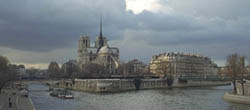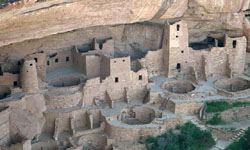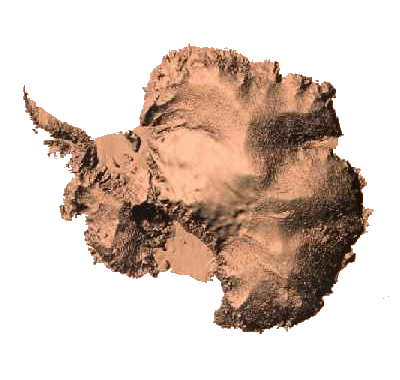Antarctica

A Complete Guide to its History, People, Cities and Culture



Photo Credits, top to bottom: Delphia, the city where visitors first arrive on the continent; Semei, on the northeast coast of Antarctica, known for its seafood, computer language industry and telekinesis experiments; Balloonists pass above the green hills surrounding Delphia, on their way back to the city; Detail of the ruins at Mimosa, where the most famous battle in Antarctican history occurred in 1403 B.C.
BUY MY BOOKS | HOME | FICTION | ESSAYS | ON-LINE DIARY | MARGINALIA | GALLERY | INTERACTIVE FEATURES | FAQ | SEARCH ENGINE | LINKS | CONTACT
www.ralphrobertmoore.com
the official website for the writings of
ralph robert moore

History
The history of Antarctica's people can be traced back seven thousand years. Nothing is known-- at least among non-Antarcticans-- about their history prior to 5,000 B.C. Carbon dating has established that some of the oldest structures still standing in Antarctica were built circa 12,000 B.C., with the exception of the Great Hall in Urdz, which dates back to approximately 40,000 B.C.
Because of the unique nature of the native Antarctican language, bus, which relies heavily upon non-verbal signals such as body stance and facial expression to convey the full sense of what is being communicated, which such signals are obviously difficult to transcribe accurately, there is not the large body of written records one would otherwise expect from so long-lived a people. Written documentation of the history of Antarctica did not start in earnest until the 1700's, when the Antarcticans adopted English as their official language and began writing down their history in a substantive way, a process which lasted from 1710 through 1860. Nearly all of Antarctica's known seven thousand year history, in other words, is based on written records that are only 150 to 300 years old. However, the few surviving manuscripts written in bus, which date from 3,300 B.C. to the eighteenth century, do not contradict the later records written in English.
At 5,000 B.C., Antarctica held a population of nearly three hundred thousand people. Approximately two hundred thousand were members of one of five large tribes that had settled different areas of the continent's shoreline. Another 80,000 were members of smaller, nomadic tribes, and 20,000 lived by themselves in the woods, the jungles or the mountains of Antarctica, either in family or quasi-family units, or alone.
This was the age when the great Antarctican cities began, from Delphia and Ipsolon along the southern shore, Suh on the western banks and Dell on the eastern, to the great glacier and quartz city of Urdz in the northern lands.
To a degree unusual for that era, all tribes of Antarctica, though some of them were separated from each other by thousands of miles, kept a regular communication with each other, and thought of themselves as one people, despite the immense distances between the communities. Equally remarkable, there was no warfare among the various settlements. Tribes met often, but peacefully.
While the five great original cities of Antarctica were being built, a process that took several centuries, many of the nomadic tribes began settling in the hills above the coves and bays of the southern and eastern seashore, perhaps realizing, from their visits to the five cities, the advantages of having a home to return to.
The typical seaside community built by the nomads was constructed around a circular area of common buildings (known in bus as a fes) where community members could socialize and trade. The typical fes would consist of several markets, a school, a meeting hall, and other public buildings, all of them arranged in concentric circles around the center of the fes. The center itself would be a perfectly round open space, paved or planted, depending upon local custom, which, among other purposes, was used for town entertainment.
In the typical village, people lived off the abundance around them: fish from the sea, crops from the ground and game from the surrounding woods. They built their own homes, taking as much land as they wanted. As is typical throughout Antarctican history, there was no "leader" within the town or within the tribe that had settled the town. Everyone did what they more or less wanted to; if there was a dispute, both sides would sit down to resolve the issue.
Antarcticans were, by 5,000 B.C., and no doubt because of the abundance of waterways throughout their nation, skilled fishermen and sailors. Around 3,500 B.C. Antarcticans first began sailing across the ocean, trading with the tribes along the southern shore of what is now known as South America, eventually traveling in their ships as far north as present-day Brazil. Later, having constructed larger ships, they increased their explorations to include the southern portion of Africa, the Orient, and the Indian subcontinent.
The Antarcticans traded for seeds and animals not known in Antarctica. Some of the earliest bus songs tell of great Antarctican vessels sailing late at night, festooned with lanterns, towards home, laden in the water with tigers, ostriches, giraffes, butterflys and other animals not native to the continent. For these exotic creatures the Antarcticans offered in trade knowledge: how to construct an arch, how to stop bleeding, how to preserve food; a commodity which travels light over the oceans, does not spoil, and can be traded again and again.
This practice of obtaining animals and seeds through trade accounts for the stunning abundance of species present on the continent today. Please see Fauna for more details.
The great tragedy in Antarctican history occurred in 1403 B.C., at Mimosa, a seaport town of 90,000 on the southern shore.
The town awoke as always on the morning of March 26, walking outside to discover a vast, dark armanda of sailing ships in its harbor. Armored men were already rowing towards the shore, a hastily-drawn delegation of villagers striding across the sand to meet the first of the ships where they would land. Within a minute of the prows scraping up onto the sand, all dozen of the delegation were slaughtered, with a hundred more rowing ships reaching shore and a thousand more behind them in the waves.
The Mimosans, aware of war from their travels, were like all Antarcticans peaceful, and had no weapons. Picking up machetes used to clear land, and long-handled hammers used in building, all of them, to a person, ran to the shore to defend their home. Their early advantage of numbers evaporated as more and more of the rowing ships touched shore in the wide bay; soon the beach was red with blood. The invaders spared no one, not man, woman nor child. To this day, Antarcticans insist the invaders used not only swords and spears, but also a new type of weapon, which from its description is clearly firearms. Here we can only repeat what the history has recorded, adding of course that the discovery of gunpowder is generally believed to not have been invented until much later.
As the Mimosans were slowly beaten back across the sands to their village, Antarcticans from nearby towns along the cove arrived, answering the alarms that had been sounded from the village's tower, and the birds that had been quickly dispatched with notes attached to their claws. But these reinforcements, expecting a fire that needed to be put out, or a tiger that needed to be run out of the village streets, had no weapons at all. Coming over the hill above Mimosa, and around the curve of its cove, they saw 60,000 of their own already hacked and blown apart, with half that number backing up under the slash and blast of the enemy. It is hard for us today, over 3,000 years later, in the world we now live in, to imagine the shock those men, women and children, most of whom lived their entire lives without seeing one fight, must have felt at the raw immensity of that carnage. Not one of them faltered. Not one turned back. Not one survived.
By the end of the third day, with citizens arriving now from as far as Ipsolon, five hundred miles away, the invaders had been pushed back into the water, to knee-depth. The bay by now, twenty miles wide, was red with blood from tens of thousands of the dead and dying. The clang and boom had continued for 72 hours without stop, the Antarcticans, with little more than knives and rakes to use, losing twenty or thirty for each invader killed. As the blood drifted out into the ocean, sharks, smelling it in the water, began swimming by the hundreds, then the thousands, into the bay, ripping and rending through the clashing forces.
By the fifth day, the invasion had been stopped, and the great dark ships that had launched the warriors sunk. The invading force has been estimated at 20,000. The Antarcticans lost over 600,000 men, women and children; twenty percent of the entire continent's population at that time. The bones of 620,000 dead, Antarctican and invader mixed, slowly drifted away from the cove, towards deeper waters, where in its vastness it clogged against a shoal offshore. Over the centuries that followed, that briar of bone formed the second largest coral reef in the world, second only to Australia's Great Barrier Reef. Antarcticans call the reef, in English, Red Reef. They have a name for it in bus, but the name is not shared with the outside world. They since have called the bay Red Bay. The name in bus is not shared.
It is difficult to convey the immense respect and gratitude modern Antarcticans feel for these ancestors who fought so fiercely to defend their homeland. It is common for Antarcticans to make a pilgrimage to Mimosa at least once in their lives to stand on the shores of Red Bay, and let some of their own blood dribble into the waters that are now blue again. Some do it every year. Even now, nearly three and a half millennia later, Antarcticans still weep when asked to tell the story of Mimosa.
To commemorate the sacrifice the Mimosans and others made to defend Antarctica, an extraordinary sculpture was begun three thousand years ago on the site of the battle, still added to each year, depicting each of the 20,000 invaders and each of the 600,000 defenders, set as separate life-size statues in the sand and sea, with life-size sculptures of the ships and rowing boats in the harbor. It is an absolutely stunning exhibit, not only for its sheer immensity, but extraordinary detail: one may look into the mouths of any of the 620,000 figures and see a detailed representation of tongue and teeth, and can read from the lips the word spoken when each figure was frozen in art; one may board any of the sculptured ships, walk down into the holds, open a sculptured drawer and find sculptured writing instruments, paper, and wine flasks within.
As a result of the attempted invasion, people from the five main tribes and a dozen of the smaller nomadic tribes met in the ruins of Mimosa to decide what action to take. Before the assembly two questions were considered: Should there be revenge? How do we prevent another tragedy?
Although by that time Antarcticans had traveled through much of the world, they did not recognize the invaders as belonging to any people with whom they were familiar. Because the Antarcticans could not unmistakably identify their invaders, they decided to not seek vengeance, for fear of that vengeance being struck against people who might be innocent. That decision, while the beach and bay were still red, reaffirmed the Antarcticans' commitment to honor, one of their strongest characters as a nation.
The meeting at Mimosa lasted through the Spring, Summer and Fall, and into the Winter. It was the first time all the tribes (including those who arrived later, hearing of the event) had sat down together. It was an opportunity not only to decide how to best protect their homeland in the future, to all their benefit, but also how best to improve that which they were protecting. Finally, after the first of the new year, the tribes decided to unite into one nation, with volunteers overseeing those issues which affected the nation as a whole. It was also decided that even as the nation grew, as the participants knew it would, feeling the energy of cooperation among them, it was important that Antarcticans' relationship with the land itself, and with nature as represented by that land, remain. For that reason, the three Hopes were created, setting aside three vast amounts of the interior of the continent as areas no one would explore, so as to preserve their naturalness, untouched, even unseen by man. These became, of course, Forest Hope, consisting of forest and grasslands, Listen Hope, jungle and marshes, and Mountain Hope, mountains and snowlands.
The day all the tribes agreed to the formation of the nation, January 19, became known afterwards as the 'day of joy'. That government has since ruled uninterrupted for 3,400 years, longer than any other government on earth. Please see Government for more details on how the Antarctican government is structured.
Although most governments are concerned with a concentration of power, the Antarctican government, in true Antarctican fashion, concerned itself with the dissemination of information. By traveling from city to township to outpost, the government volunteers were able to spread knowledge and efficiencies throughout the nation, which in turn led to greater knowledge and improved efficiencies.
To improve the spread of information within Antarctica, and also to better defend it by earlier warnings, the Antarcticans also set about devising a better means to get information quickly to all its citizens. This led first to wider use of birds as carriers of written messages, the practice of which was beforehand limited to the southern coast of the continent, and later, in 800 A.D., to the development of the radio, which in turn brought about, in 1,400 A.D., nin (please see Beliefs), useful not only in preventing any ship (or later, airplane or missile), from getting nearer than 500 miles from the continent, but which also has, since 1,640 A.D., been used to keep pollutants from entering Antarctica's atmosphere Nin proved so successful it eventually, to at least some degree, as evidenced by the information we now have available about the continent and its people, has replaced the concept of the "true" Antarctica (see separate article), previously used as Antarctica's chief defense.
With the development of the radio in 800 A.D., Antarcticans were now able to communicate ideas quickly with each other, and the nation grew rapidly in technology, without ever losing its place in nature. Television came into widespread use in 1340 A.D., a statement which still shocks, of course, demonstrating how effective the concept of the "true" Antarctica has been.
In 1655 A.D., almost three thousand years after the tragedy at Mimosa, Antarcticans decided to venture forth into the outside world again, first by ship, then by air vessels. The outside had never been forgotten, of course. The Antarcticans heading out over the waves for the first time in three millennia were consumed with curiosity as to how the world had developed. They moved easily among the peoples of the world, either in mimicry or using nin. Since then, there has been a growing sentiment within Antarctica that it is time for it to rejoin the world.
In 1913 A.D., Antarticans first allowed others to become aware of the least tangible proof of its existence, its language, bus. In 1991 A.D., after much discussion, the nation decided to gradually emerge into the rest of the world, becoming visible so that all could see the 'true' Antarctica.
This process has continued since.
print this article